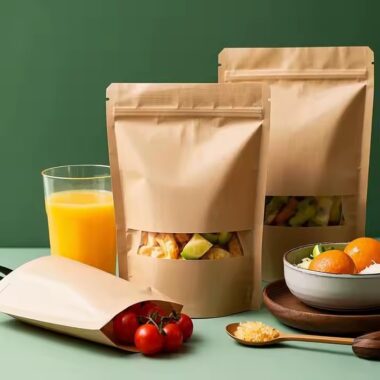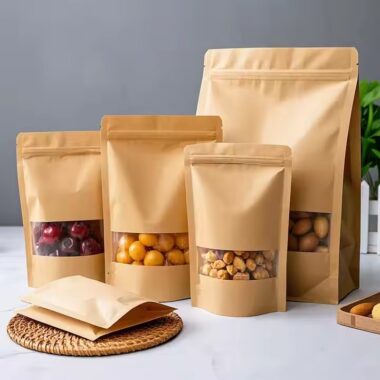Introduction
Choosing the right material is one of the most critical steps in paper pouch production. The selected material not only determines durability but also influences product protection, branding, and sustainability. For businesses sourcing packaging from a paper pouch manufacturer or supplier, understanding material options is essential. This guide outlines the most common choices and explains how to select the right one based on product needs.
📌 Kraft Paper for Natural and Eco Appeal
Kraft paper remains one of the most popular materials for paper pouches. It provides a natural, rustic appearance while maintaining good strength. For brands targeting eco-conscious customers, kraft is highly appealing. Although kraft alone has limited barrier properties, it is often laminated with protective films to improve moisture and oxygen resistance.
📌 White Paper for Premium Printing
White paper pouches are ideal for businesses looking to highlight vivid graphics and brand logos. The smooth surface ensures high-quality printing, making it a favorite for cosmetics, snacks, and retail packaging. White paper also gives a clean, premium look, though additional lamination may be required to strengthen durability and preserve product freshness.
📌 Laminated Structures for Barrier Protection
Durable pouches often use laminated materials, combining paper with plastic films, foil, or biodegradable layers. These laminations improve moisture, oxygen, and light resistance, making them suitable for coffee, tea, and perishable goods. A professional custom pouch supplier can recommend the right lamination structure based on your product’s shelf life and storage requirements.
📌 Foil-Lined Paper for Maximum Freshness
For sensitive products like coffee beans, spices, and nutritional powders, foil-lined paper pouches provide the highest level of protection. The aluminum layer blocks oxygen, moisture, and UV light, ensuring long-lasting freshness. While slightly more expensive, this option is preferred by brands prioritizing product quality and customer satisfaction.
📌 Eco-Friendly Alternatives
With sustainability becoming a global trend, more manufacturers now offer recyclable or compostable paper pouch materials. These may include plant-based films or biodegradable laminates that maintain durability while reducing environmental impact. Choosing eco-friendly options not only supports sustainability goals but also enhances brand image.
Conclusion
Selecting the right material for durable paper pouch production is about balancing product protection, branding, cost, and sustainability. Kraft and white paper offer excellent printability and appeal, while laminated and foil-lined structures ensure strong barrier protection. Eco-friendly alternatives, meanwhile, help brands align with global sustainability demands. By consulting with an experienced paper pouch manufacturer, businesses can identify the most suitable materials and create packaging that is both durable and market-ready.

















